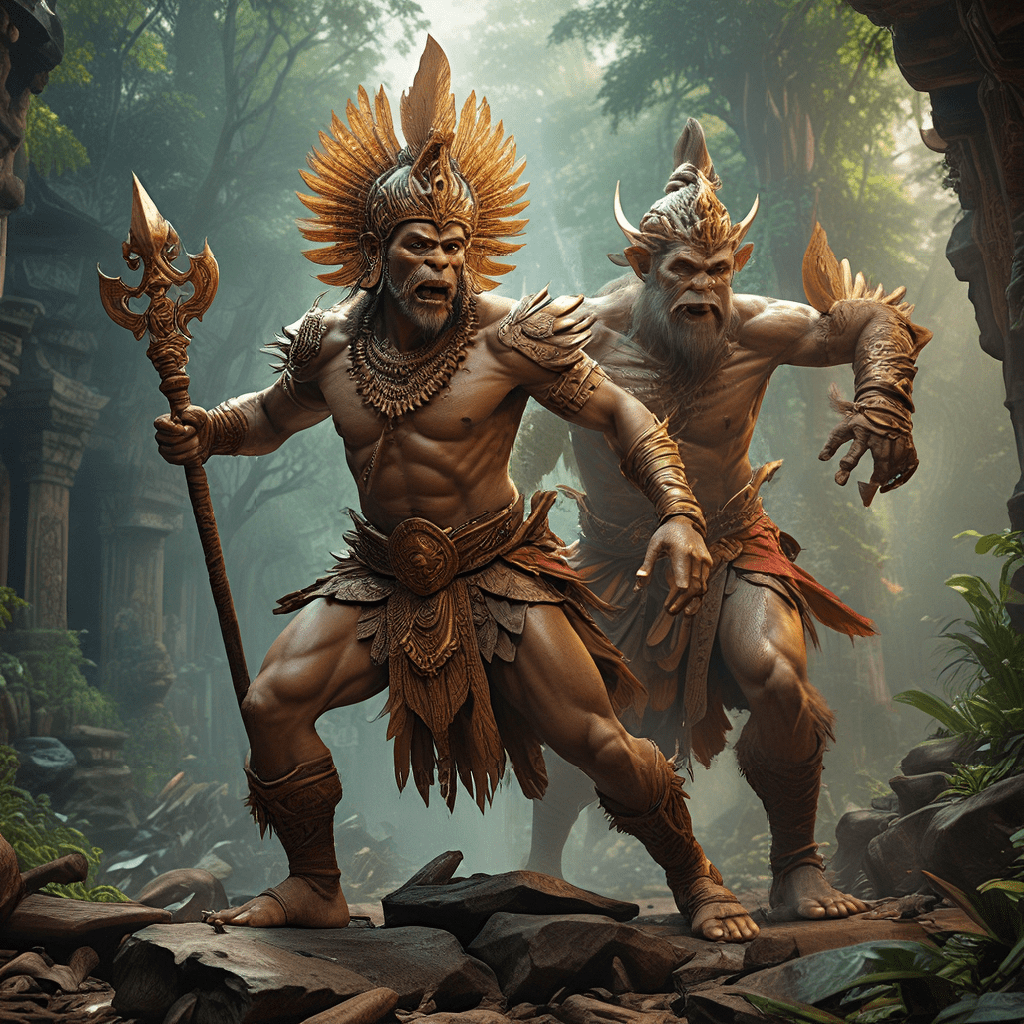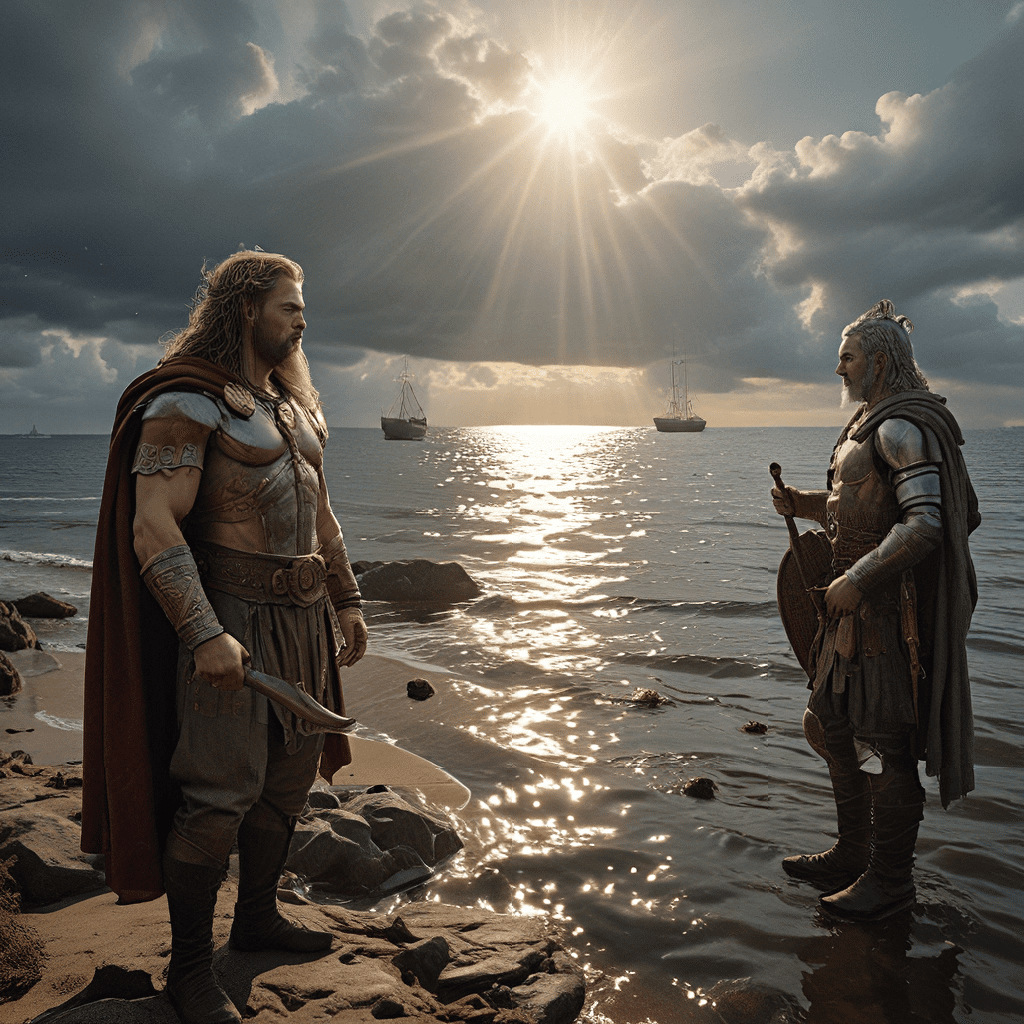Aztec Mythology: The Tale of the Hero Twins’ Return
In the rich tapestry of Aztec mythology, the story of the Hero Twins is one of the most enduring and influential narratives. This epic tale, woven with elements of bravery, sacrifice, and the cyclical nature of life and death, resonates with the core beliefs of the Aztec civilization. The Hero Twins, known as Xochipilli and Xolotl, represent the triumph of light over darkness, life over death, and ultimately, the victory of order over chaos. Their journey into the underworld and subsequent return, a feat that defied the very laws of the afterlife, became a cornerstone of Aztec belief, shaping their understanding of the cosmos and their place within it.
The Hero Twins: Xochipilli and Xolotl
Xochipilli, meaning "Flower Prince," was associated with beauty, art, games, and music. He was the patron deity of flowers, songbirds, and dance, embodying the vibrant and joyous aspects of life. Xolotl, on the other hand, was a more enigmatic figure, often depicted as a dog-like creature, associated with the setting sun, twilight, and the underworld. His connection to the realm of death made him a guide and protector for those embarking on the perilous journey to the afterlife.
Together, these brothers represented a duality inherent in the Aztec worldview: the balance between life and death, light and darkness. They were not just individuals but embodied the very essence of the cosmos, representing its cyclical nature and the interconnectedness of all things. Their individual powers and roles complemented each other, allowing them to face the challenges of the underworld. Xochipilli's charm and artistry, combined with Xolotl's knowledge of the afterlife, made them a formidable duo.
The Journey to the Underworld: Confronting the Lords of the Dead
The tale of the Hero Twins' descent into the underworld begins with their encounter with the Lords of the Dead, a formidable group of deities who ruled over the afterlife. The twins, driven by a thirst for adventure and a desire to challenge the established order, sought to prove their strength and cunning. Their journey was not fueled by malice but by a quest for knowledge and a desire to reshape the world in their image.
The underworld, known as Mictlan, was a realm shrouded in darkness, a place of trials and tribulations. It was a place where the souls of the deceased were tested and judged, a journey fraught with danger and uncertainty. The Hero Twins, undaunted, ventured into this perilous realm, determined to confront the Lords of the Dead and alter the fate of those who had passed.
Trials and Challenges: Testing the Twins’ Courage and Cleverness
The underworld was a labyrinth of obstacles and trials designed to test the courage, wit, and resilience of the souls who dared to pass through. Each stage was guarded by a different Lord of the Dead, each wielding unique power and demanding a different form of courage and cunning. The Hero Twins, armed with their courage, cleverness, and the knowledge of their ancestral lineage, faced these challenges with a spirit of determination.
They navigated treacherous landscapes, outwitted monstrous guardians, and defied the laws of the underworld. Their resilience was tested, their ingenuity challenged, and their courage pushed to the limit. But they refused to be defeated. They were not just seeking to escape the underworld but to reshape it, creating a new order that would benefit all those who passed through its gates.
The Game of Ball: A Cosmic Contest for Power
One of the most pivotal trials the twins faced was the dreaded game of ball, a contest not just for entertainment but for cosmic power. This ancient game, a ritualistic practice amongst the Aztecs, was seen as a representation of the struggle between life and death, light and darkness. The Hero Twins, facing the formidable Lords of the Dead, were challenged to a game of ball that would determine their fate and the fate of the underworld.
The rules of this game were steeped in symbolism and ritual. The ball, representing the sun, was the object of the game, while the goalposts were seen as the portals to the underworld. The stakes were high. Failure meant defeat and potentially, eternal imprisonment in Mictlan. Victory meant a chance to rewrite the rules of the afterlife and bring hope to those who had passed.
The Triumph of the Twins: Defeating the Lords of the Dead and Escaping the Underworld
Despite facing formidable challenges, Xochipilli and Xolotl, with their cunning and bravery, managed to outwit the Lords of the Dead. Through a combination of trickery, skill, and their knowledge of the underworld's secrets, they overcame each obstacle. They used their understanding of the underworld's rules and their knowledge of ancient rituals to outmaneuver their opponents. Their victory was not about brute force but about wisdom, strategy, and a deep understanding of the cosmic order.
The game of ball proved to be a turning point. They tricked the Lords of the Dead, using their understanding of the game's symbolic meaning and its connection to the sun. The twins’ victory signified the triumph of life over death, light over darkness, and the cyclical nature of existence. They proved that even in the underworld, the forces of creation and renewal could prevail.
Their victory allowed them to escape the clutches of the Lords of the Dead, defying the very laws of the underworld. They emerged from Mictlan, the underworld, carrying with them the secrets of the afterlife and a new understanding of the cosmos. Their journey, a testament to their courage and cunning, became a legend.
The Return of the Twins: Bringing Light and Life to the World
Emerging from the underworld, the Hero Twins brought with them the knowledge of the afterlife and a new understanding of the cycle of life and death. They returned to the world of the living, bringing with them the light that had been extinguished in the underworld. Their return marked a turning point, ushering in a new era of peace, prosperity, and knowledge.
Their journey, a test of courage, cunning, and resilience, brought about a transformation in the world. They not only escaped the underworld but also challenged the power of the Lords of the Dead, introducing a new order to the realm of the afterlife. They established a new path to the afterlife, one that was not solely defined by fear and sacrifice, but also by the hope of transformation and renewal.
The Hero Twins’ return was celebrated as an act of liberation and renewal. Their victory over the Lords of the Dead brought with it the promise of new life, a world free from the grip of darkness and fear. Their triumph resonated with the core beliefs of the Aztec civilization, reinforcing their understanding of the cyclical nature of life, death, and rebirth.
The Significance of the Hero Twins’ Return: Establishing a New Order and a Path to the Afterlife
The return of the Hero Twins was more than just a triumphant escape from the underworld. It marked a fundamental shift in the cosmos, a new order that would govern the world of the living and the realm of the dead. They rewrote the rules of the afterlife, establishing a new path for those who journeyed to Mictlan.
Their victory ensured that life, represented by the twins, was not forever conquered by death. The cycle of life and death, a fundamental aspect of Aztec belief, was reaffirmed, but with a new understanding of its power and potential. They brought hope to those who had passed, offering a path to renewal and transformation, not just an eternal darkness.
Their journey, a testament to the power of courage, cunning, and knowledge, resonated with the Aztec worldview, shaped their understanding of the cosmos, and revealed the intricate relationship between the world of the living and the realm of the dead.
Theories on the Origin of the Hero Twins Myth: Explanations for the Story’s Themes and Symbols
The tale of the Hero Twins, like many myths, carries within it layers of meaning and symbolism, reflecting the beliefs and values of the civilization that created it. Scholars have proposed various theories to explain the origin and significance of the Hero Twins myth:
- A Cosmic Struggle: The myth might be a symbolic representation of the constant struggle between light and darkness, life and death, order and chaos. The Hero Twins’ victory signifies the triumph of the forces of creation and renewal over the destructive forces of darkness and decay.
- A Reflection of Aztec Beliefs: The story is deeply rooted in Aztec beliefs about the cyclical nature of life and death, the importance of sacrifice, and the interconnectedness of all things. The Hero Twins’ journey serves as a reminder of these core tenets and their relevance in the everyday lives of the Aztecs.
- A Historical Event: Some scholars believe the myth to be a dramatized version of a real event, perhaps the conquest of a rival civilization or the establishment of a new political order. The myth serves as a way to legitimize power and celebrate the achievements of the Aztecs.
The Hero Twins Myth as a Reflection of Aztec Beliefs: Understanding the Role of Sacrifice, Death, and Rebirth
The Hero Twins myth is a powerful reflection of Aztec beliefs about death, sacrifice, and the cyclical nature of life. The myth underscores the importance of sacrifice, not as a morbid ritual but as a form of renewal and transformation. The Hero Twins’ journey into the underworld and their subsequent return were a symbolic representation of this cycle.
The myth highlights the cyclical nature of life and death, showing that death is not an end but a transition, a passage into a new state of being. The journey to the underworld is a test, a period of transformation, preparation for a new phase in the afterlife.
The myth also reinforces the importance of ritual practices in shaping the world and the afterlife. The Aztec believed that rituals, especially those related to sacrifice, could influence the gods and ensure the continued flourishing of the cosmos. The Hero Twins' journey embodies this belief, showing that through courage and sacrifice, even the realm of the dead could be influenced.
FAQ:
- What other notable myths exist within Aztec mythology? Besides the Hero Twins, other significant myths include the legend of Quetzalcoatl, the feathered serpent god, and the myth of Tenochtitlan's founding.
- How did the Hero Twins myth impact Aztec culture and society? The myth served as a powerful reminder of the importance of courage, knowledge, and the cyclical nature of life. It played a role in shaping their rituals, beliefs, and understanding of the world.
- What is the significance of the underworld in Aztec mythology? The underworld, Mictlan, was a significant part of Aztec belief, representing a realm where souls underwent trials and transformations.
- What was the importance of the game of ball in Aztec culture? The game of ball, a ritualistic practice, was believed to symbolize the struggle between life and death, light and darkness. It was an important element of Aztec life, reflecting their belief in the cyclical nature of existence.
The story of the Hero Twins remains a powerful and enduring narrative, not only in Aztec mythology but also in the broader study of human mythology and culture. It offers a glimpse into the ancient Aztec worldview, their beliefs about life, death, and the interconnectedness of all things. It serves as a reminder that even in the face of adversity, courage, cunning, and knowledge can prevail.




